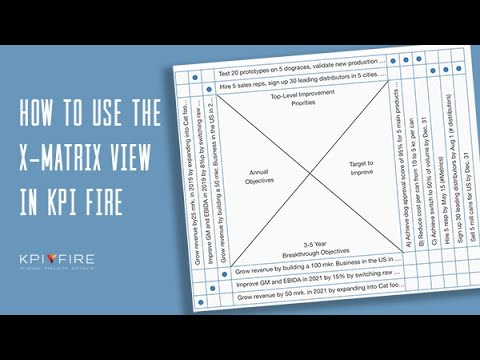Lean Six Sigma Toolbox, Strategic Planning
Common Misconceptions in Hoshin Planning
Within the strategic planning world, Hoshin Kanri is becoming a major buzzword. Hoshin Kanri refers to managing company objectives and is sometimes called “Policy Deployment” or “Hoshin Planning”. However you say it, Hoshin Planning is a proven method for ensuring strategic goals are achieved while minimizing waste in business processes. Hoshin Planning is part of an overall Lean approach to operations management and is the baseline for a successful strategic plan.

Hoshin Planning software is quickly becoming a must-have tool for leaders in hospitals, manufacturing plants, and other industries striving to become more Lean. Because of its wide and rapid success, Hoshin Planning and the software to manage it have several false narratives surrounding its proper use and results. Let’s look at a few of these misconceptions and uncover the truth.
Myth 1: Hoshin Planning is an End-All Solution
Some executives begin employing a Hoshin Planning strategy with the idea that it will simply and instantly solve all their organizational issues from top to bottom. Not only is this untrue, it may lead leaders to miss the true purpose of Hoshin.
Far from a method meant to take hundreds of tangled threads and unweave them from each other, Hoshin Planning is actually meant to help you determine which of these threads is the most important. From there, the goal is to help you implement strategies which will see these threads through to their successful completion. Leaders use what is called a “catch ball” process to communicate objectives they want to achieve and receive feedback from managers responsible for reaching those objectives on what can realistically be accomplished. If this back-and-forth negotiation is successful, there will be complete alignment between the executive team’s objectives and those of each functional department. Hoshin Planning alone will not make your organization’s problems go away, but it will help you focus more on what is most important while eliminating the fluff and distractions from the strategic plan.
Myth 2: Hoshin Planning and Creating Strategy are the Same Thing
Hoshin Planning is just one method by which a complete strategic plan is accomplished – they are not interchangeable terms. Hoshin Planning is a key element of the overall strategic planning process which includes the “state of the business” review at the front end, as well as the strategy execution through process improvement projects and leadership follow up on the back end. Strategy creation can begin well in advance of Hoshin Planning, and will eventually be whittled down to three or four stretch goals, or “Hoshins”, that your team chooses to focus on during the coming 1 to 3 years. Hoshin Planning is a vehicle to align your team creation as part of a broader process.
Myth 3: Hoshin Planning is Difficult to Do and Maintain
Many managers hear the term Hoshin Kanri and immediately go into a shell based on all the new terms, documents, and potential paperwork. One of the primary reasons for this reaction is the X-Matrix, a spreadsheet where strategic goals are cascaded down through the organization. Because the X Matrix is unfamiliar to most leaders and can be overly complex, it may not be the best tool for communicating strategic goals. Keeping the spreadsheet up-to-date is also a challenging, which means most X Matrices end up in a folder somewhere and are rarely reviewed after being created.
If strategic goals are only reviewed once a quarter, the chances of them being achieved are slim. Fortunately, reviewing KPIs (Key Performance Indicators) and goals on a daily basis can be done easily with KPI Fire Hoshin Planning software. KPI Fire is designed to eliminate the waste of tracking down project status reports and updating goals by giving managers the ability to perform these tasks on their own. KPIs are updated in real time and project status is visually easy to understand. Creating a complete Hoshin Plan using the catch ball process may take a few weeks, but maintaining the plan throughout the year should be painless.
Remember that strategy alone is not enough to succeed. An estimated 44% of strategy efforts fail. Using the Hoshin Planning method as part of a complete strategy execution process will dramatically increase your odds and using Hoshin Planning software can make the entire process easy.
Want to learn more about Hoshin Planning and the benefits of managing your metrics, projects, and goals in one place? Visit our website or call our team. We’re standing by to help.
